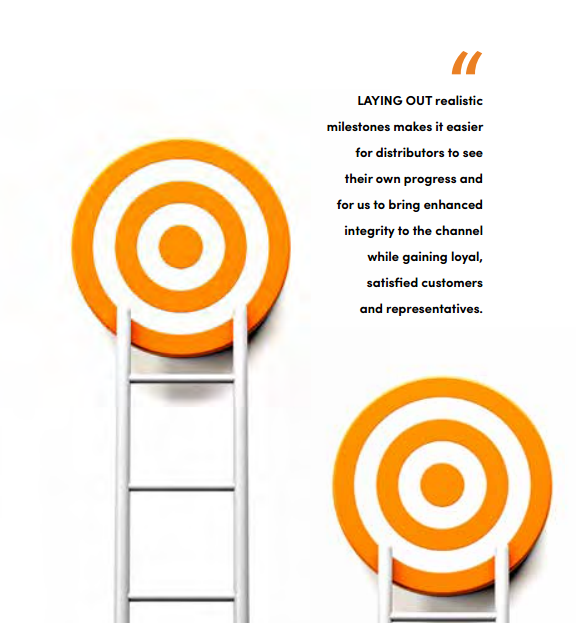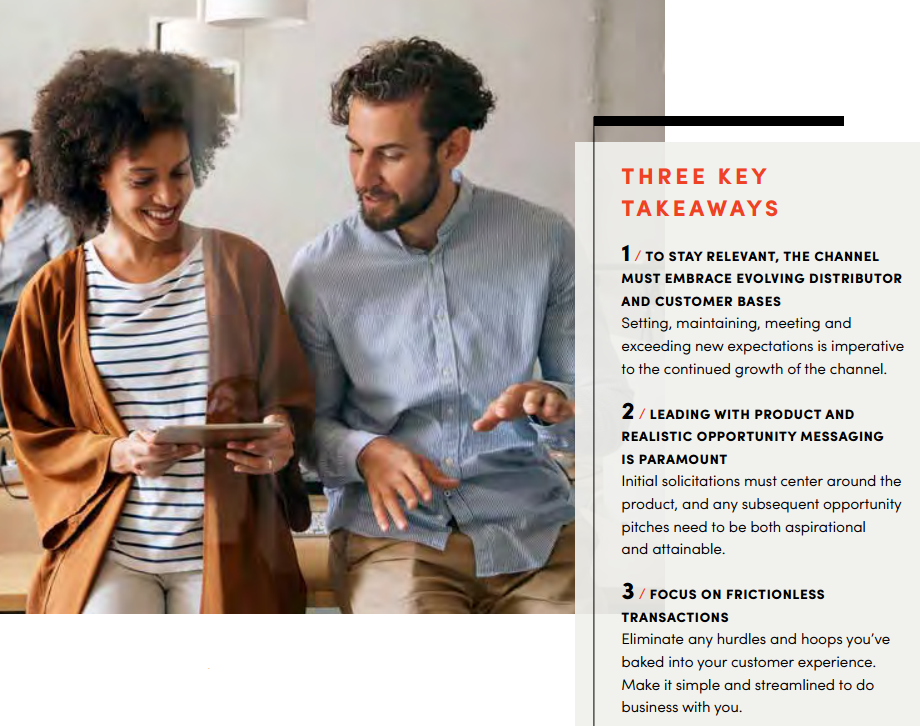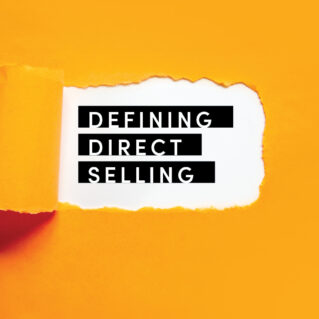Setting, managing and meeting customer and distributor expectations.
We were all hopeful that the record highs the direct selling channel experienced in 2020 and 2021 would continue its upward trajectory. After all, 80 percent of companies with an average of $50 million in annual revenue saw year-over-year growth in 2020, and 30 companies experienced $100 million+ revenue growth.
The social dynamics and restrictions of that time meant we had a captive audience with a heightened demand for products that didn’t sit on a store shelf. But as we settle back into the normal rhythms of day-to-day life, we’re seeing that the macrotrends that were already in play before the pandemic are still inescapable. These shifts are generational, technological and carry cultural momentum.
To remain relevant and succeed in today’s direct selling landscape…we must overcome the misperceptions and stigma of the past by being completely committed to setting, managing and meeting the expectations of our distributors and customers alike.
Sell Attainable Success
From the outset, the channel and distributors are often face-to-face with a negative public perception, but it has in part been one of our own making. Too often, companies highlight and promote the most extreme examples of success. We know, however, that hitting the highest ranks or sales tiers requires a tremendous amount of time, effort and dedication.
When we were the only game in town for side hustles and supplemental income, we were able to procrastinate dealing with this unmet expectation. Now, the gig economy offers up countless earning opportunities that can be completed in the margins of a workday or with underutilized resources. Competition today is fierce. Whether a person jumps on Fiverr, Taskrabbit or another gig-based platform, it is understood right out of the gate what the income potential could be and what effort is required to earn that income.
Direct selling’s default pitch has been to talk about the highest potential for success when it comes to both the income opportunity and benefits of our products, but we are now in a day that requires a different approach.

Generation Realist
Today’s distributors are different. They don’t join with pie-in-the-sky ambition or hopes of becoming a top-ranking affiliate. Instead, this generation only moves up the ranks when they witness the opportunity with their own eyes and see how it can change lives. The aspirational ladder-climbing pitch is now a bygone era. It doesn’t click with this demographic anymore.
Instead, attainable goals like an extra $500 or $1,000 a month are today’s most effective carrots. Gig work companies like Etsy don’t tell prospective affiliates that they could make six figures a year, even though it has been done. They gain trust from the beginning by the expectation being set for what is likely, rather than possible.
It’s not that we shouldn’t help distributors reach their lofty income goals, but rather that we should provide the map for the next earning echelon only when those affiliates are ready. In the meantime, laying out realistic milestones makes it easier for distributors to see their own progress and for us to bring enhanced integrity to the channel while gaining loyal, satisfied customers and representatives.
Switch to a Product-First Mindset
It’s now more socially acceptable to share products with friends and strangers than ever before. In the social media age of influencers and affiliates, we’ve grown accustomed to seeing sales pitches in our feeds all day long and to buying from individuals rather than large corporations.
Direct selling pioneered this person-to-person selling more than a century ago. We’re exceptional at it. But to be a leader in this space, we now need to consider what we’re offering customers—and in what order we present it. Sequencing matters. Years’ worth of data points tells us that if a company attempts to offer customers the product and the opportunity simultaneously in its first few impressions, customers are less likely to convert to buyers.
That means that all brand touchpoints that are customer-facing—especially the website—should have no more than one mention of the opportunity. Potential buyers should arrive at the brand website and become captivated by the product first and foremost. This will be a drastic shift for some legacy companies, but I’m convinced it’s one we need to make in earnest.
Social media, like the website, needs to be product-driven. If you want a social feed promoting the sales opportunity, make a separate one. Instagram, TikTok and Facebook should be a welcome mat for people who are completely uninitiated in your brand.
All brand touchpoints that are customer-facing—especially the website—should have no more than one mention of the opportunity.
Only after customers experience the product and have their expectations met and exceeded should a company introduce sharing and then team building. We’re still trying to deliver too many messages and concepts all at once, but we need to respect and understand that all of our customers have unique and different journeys in relation to our products and opportunity.
Customize Messaging
Personalized algorithms found in everyday technology like grocery store apps and online shopping mean that customers and distributors now expect companies to know their preferences, needs and habits. Our marketing should be tailored for the individual. But, overall, the direct selling channel is unfortunately still using the same megaphone and message for every person.

If a new customer expresses interest in our products but we send them email blasts, text messages and campaigns all about team building or events they don’t care about, we may think that we’re inviting them into the opportunity side of the business, but what we’re actually doing is eroding trust, squashing interest and providing a bad customer experience. It’s alienation—not an invitation.
By segmenting our messaging through marketing automation, we can provide an independent route for each individual person. Evergreen email and SMS campaigns, designed to deploy when triggered by certain customer behaviors, can offer bite-sized steps that walk people through the different parts of their journey and advance them down the appropriate path. There are tools that can make this easier to install, like Hubspot or Klaviyo, and we must ensure that each message and brand touchpoint is laser targeted for the right audience and sets the right expectations and tone.
Is it Easy to Do Business with Us?
Last year, more than 60 million Americans freelanced, yet direct selling remains a small slice of that gig economy pie. To keep up, we need to consider what gig workers expect and analyze our channel’s greatest opportunities for growth.
First, the direct selling opportunity should feel as easy as becoming an Uber driver, and the income should be as immediate. Today’s consumer wants instant proof, by way of immediate value from a product or paycheck, so it’s time for us to adopt instant commissions and overhaul our traditional paycheck process. The goal is to get people out in their worlds sharing the products. Reducing or removing the initial “buy-in” cost and monthly minimums to earn a paycheck makes us more competitive.
Second, for most gig opportunities such as Lyft, Upwork or Etsy it’s easy to get started in just a few clicks, so that’s our new baseline. If we’re being honest with ourselves, it can be pretty challenging to get a direct sales organization up and running; to understand a compensation plan; to learn how to sell the product; and to comprehend what it takes to earn commissions. Even getting registered or ordering can be full of friction. We need to simplify and reduce the complications and barriers within these processes.
The direct selling opportunity is the original side hustle. We know how to harness the power of word-of-mouth marketing, social selling and community better than any other business. If we will systematically remove the hurdles and hoops in our processes and properly set, manage and meet the expectations of customers and distributors, we’ll deliver a life-changing opportunity to the next generation. And we’ll gain trust and credibility as a channel as well.
The 3 Keys to Setting, Managing and Exceeding Customer Expectations
The next generation of potential customers and distributors demand realistic goals and instant proof of success. Here are three goalposts to make sure the experience you provide meets the expectations they prefer.
1/ Sequence

Introduce your company to customers in the proper order. The product should always come first, so don’t flood first-time buyers with information about the opportunity. Any information about team building should be reserved for loyal customers who express interest in sharing the product with others.
2/ Segment
Tailor messaging to each unique visitor. Websites and social media should be product-focused and customer based, while event and corporate information should be sent to field leaders. Automating evergreen SMS and email campaigns to match a customer’s progress can help them take their next steps and create customer satisfaction.
3/ Simplify
Reduce friction by limiting the number of steps required to buy or register—and ditch monthly minimums and hefty buy-ins. Take every opportunity to minimize clicks and dial down complexity.

Wayne Moorehead has deep experience in marketing and brand strategy. Wayne’s rare blend of experience and success has shaped his philosophy on effective growth strategies, and he believes the future of the channel will blend the best of direct selling with the best of direct-to-consumer. He also hosts the DSN Direct Approach podcast.
From the April 2023 issue of Direct Selling News magazine.


